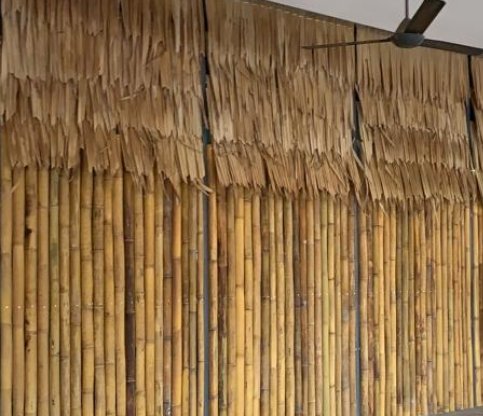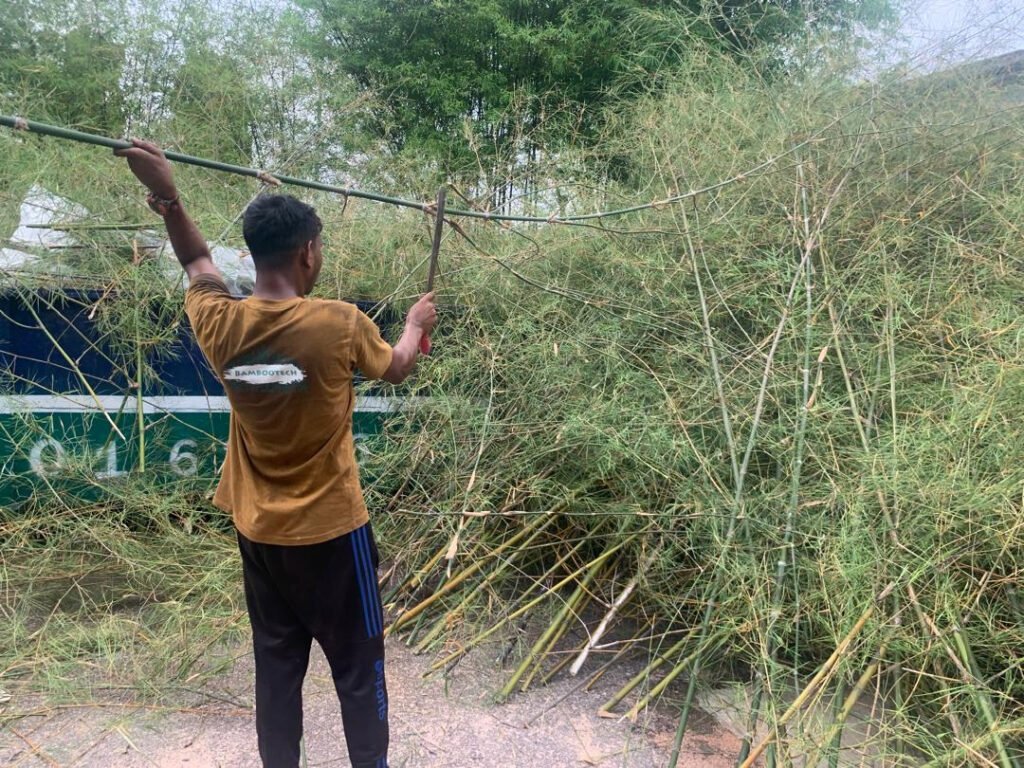Roofing
Bamboo Roofing: A Sustainable and Durable Choice for Eco-Friendly Homes
Bamboo roofing has become a popular alternative to traditional roofing materials due to its durability, sustainability, and aesthetic appeal. As an eco-friendly solution, bamboo roofs are widely used in resorts, gazebos, eco-lodges, outdoor pavilions, and even residential homes.
If you are considering bamboo roofing, this guide will provide everything you need to know, including its benefits, types, installation process, and maintenance tips.

What is Bamboo Roofing?
Bamboo roofing is a natural roofing system made from bamboo poles, shingles, or woven bamboo strips. It is an excellent option for creating aesthetic, rustic, and tropical-style roofs while being cost-effective and environmentally friendly.
Bamboo roofs are commonly used in traditional Southeast Asian architecture but are now gaining global popularity due to their sustainability and strength.
Benefits of Bamboo Roofing
1. Eco-Friendly & Sustainable
Bamboo is one of the fastest-growing plants, making it a highly renewable roofing material. Using bamboo roofing helps:


2. Strong & Durable
Despite being lightweight, bamboo is incredibly strong and can withstand various weather conditions, including:
✔️ Heavy rain and humidity
✔️ Strong winds (when properly installed)
✔️ UV rays and tropical heat
3. Cost-Effective Roofing Solution
Compared to conventional roofing materials like metal, concrete, or clay tiles, bamboo roofing is more affordable while offering great thermal insulation, reducing energy costs.
4. Aesthetic & Natural Look
Bamboo roofing enhances the natural beauty of any structure. It blends perfectly with:
✔️ Tropical, Balinese, or rustic designs
✔️ Outdoor gazebos, pavilions, and resorts
✔️ Eco-friendly homes and modern architecture
5. Lightweight & Flexible
Bamboo is lighter than traditional roofing materials, making it easier to install without requiring a heavy supporting structure.
6. Naturally Resistant to Pests & Moisture
When treated properly, bamboo roofing is:
✔️ Resistant to termites and insects
✔️ Water-resistant with protective coatings
✔️ Mold and mildew-resistant in humid climates
Types of Bamboo Roofing
1. Bamboo Thatch Roofing
- Made from woven bamboo strips or leaves
- Provides natural insulation and a rustic appearance
- Commonly used in tropical resorts and gazebos
2. Bamboo Shingles
- Thin, flat bamboo tiles used for roofing
- Durable and offers better weather resistance
- Used in residential homes, lodges, and outdoor structures
3. Split Bamboo Roofing
- Uses split bamboo poles layered for strength
- Ideal for temporary shelters and eco-huts
- Provides a traditional aesthetic
4. Bamboo Roofing Panels
- Pre-made bamboo panels that are easy to install
- Suitable for permanent structures
- Offers a modern, polished look
How to Install Bamboo Roofing?
Proper installation ensures long-lasting durability. Follow these steps:
1. Prepare the Bamboo Material
✔️ Select high-quality bamboo (treated to prevent pest infestation and water damage).
✔️ Choose between bamboo shingles, thatch, or panels based on your design preference.
2. Build a Strong Roof Frame
✔️ Use bamboo poles or timber beams to create a sturdy base.
✔️ Ensure the frame can withstand wind and heavy rain.
3. Install Bamboo Layers
✔️ Arrange bamboo shingles, thatch, or panels securely.
✔️ Overlap each layer to prevent water leakage.
✔️ Secure with natural ties, screws, or bamboo nails.
4. Apply a Protective Coating
✔️ Use waterproof sealants or natural oils to extend lifespan.
✔️ Regularly reapply coatings to maintain durability.
5. Ensure Proper Ventilation
✔️ Allow for air circulation to prevent heat buildup.
✔️ Install underlayers like bamboo mesh or insulation if needed.
Maintenance Tips for Bamboo Roofing
To extend the life of your bamboo roof, follow these maintenance tips:
✔️ Regular Cleaning – Remove dirt, leaves, and debris to prevent mold growth.
✔️ Reapply Protective Coating – Use varnish or waterproof treatments every 1-2 years.
✔️ Inspect for Damage – Check for signs of wear, insect infestation, or cracks.
✔️ Replace Broken Sections – Promptly replace damaged shingles or panels.
✔️ Avoid Excess Moisture – Ensure proper drainage and waterproofing.
Common Uses of Bamboo Roofing
1. Tropical & Eco-Friendly Homes
Bamboo roofing provides excellent insulation while complementing sustainable architecture.
2. Resorts & Beachfront Villas
Many luxury eco-resorts use bamboo roofing for its natural look and environmental benefits.
3. Outdoor Gazebos & Pavilions
Perfect for gardens, parks, and relaxation spaces, bamboo roofs add a charming touch.
4. Traditional & Cultural Buildings
Used in temples, rural homes, and heritage sites, bamboo roofing preserves traditional craftsmanship.
5. Restaurants & Cafés
Many outdoor dining spaces incorporate bamboo roofing for its relaxing and natural ambiance.

Why Choose Us for Bamboo Roofing?
As a trusted bamboo roofing supplier in Malaysia, we offer:
✔️ High-quality, sustainable bamboo roofing materials
✔️ Custom solutions for homes, resorts, and commercial spaces
✔️ Affordable prices with bulk order discounts
✔️ Fast delivery & professional installation services
📞 Contact us today for more details on bamboo roofing options!


